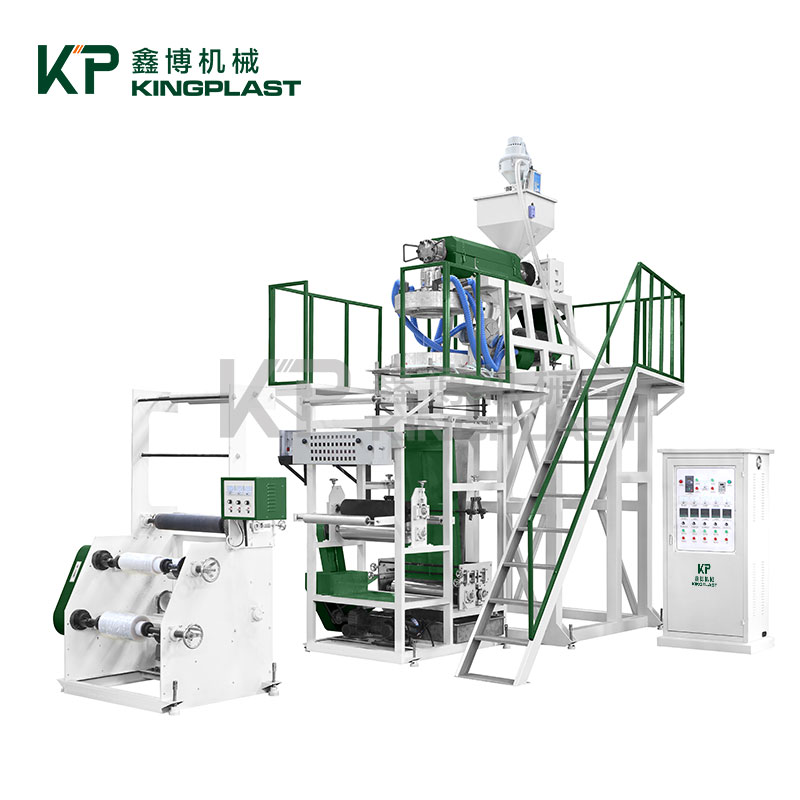- English
- Español
- Português
- русский
- Français
- 日本語
- Deutsch
- tiếng Việt
- Italiano
- Nederlands
- ภาษาไทย
- Polski
- 한국어
- Svenska
- magyar
- Malay
- বাংলা ভাষার
- Dansk
- Suomi
- हिन्दी
- Pilipino
- Türkçe
- Gaeilge
- العربية
- Indonesia
- Norsk
- تمل
- český
- ελληνικά
- український
- Javanese
- فارسی
- தமிழ்
- తెలుగు
- नेपाली
- Burmese
- български
- ລາວ
- Latine
- Қазақша
- Euskal
- Azərbaycan
- Slovenský jazyk
- Македонски
- Lietuvos
- Eesti Keel
- Română
- Slovenski
- मराठी
- Srpski језик
Do you know how to choose die gap size when you order film blowing machine?
2025-10-11
Die gap as an important part of die head ,size depends on raw material thickness .Do you know how to choose die gap size when you order film blowing machine?And do you know What will be the impact on the final plastic film if the die gap is not right?

1. Standard Die Head Gap Specifications
Different types of die heads (single-layer vs. co-extruder) and compatible raw materials (HDPE & LDPE) require tailored gap settings. The table below outlines our standard configurations, along with their applicable film thicknesses and typical use cases:
| Die Head Type | Raw Material Compatibility | Standard Gap (mm) | Applicable Film Thickness (mm) | Typical Application Scenarios |
| Single-Layer Die Head | HDPE (High-Density PE) | 1.8 | 0.05 – 0.1 | Daily packaging (grocery bags, garbage bags), industrial liners |
| Single-Layer Die Head | LDPE (Low-Density PE) | 2.2 | 0.05 – 0.1 | Flexible packaging (food wraps, shrink films), agricultural covering films |
| Co-Extruded Die Head | Multi-layer PE/Barrier Resins | 2.5 | 0.06 – 0.12 | Functional films (moisture-proof barrier films, heat-sealable packaging, medical pa |
HDPE & LDPE Gap Differences: HDPE has higher rigidity and lower melt flowability than LDPE. A smaller gap (1.8mm) ensures HDPE melts are extruded with sufficient pressure to form uniform films; LDPE’s better flowability requires a slightly larger gap (2.2mm) to avoid excessive material accumulation at the die lip.
Co-Extruded Die Head Gap: Co-extrusion have AB Two layer ,ABA and ABC three layers . The 2.5mm gap provides enough space for layered melt mixing and uniform distribution, preventing layer separation and ensuring consistent film thickness across the entire width.
2.Risks of an Excessively Small Die Head Gap
A gap smaller than the standard setting disrupts the molten plastic’s flow path, leading to a chain of issues affecting both equipment and product quality:
2.1 Blocked Material Discharge & Equipment Overheating
Molten plastic faces extreme resistance when passing through a narrow gap, causing incomplete or uneven discharge. This blockage traps melt in the die head and the three-way joint (a component that guides melt from the extruder to the die head). Normally, the three-way joint relies on smooth material flow to dissipate heat generated by extrusion friction; when blocked, heat accumulates rapidly.
Equipment Damage: Prolonged overheating can burn out the die head’s heating elements and thermal sensors, reducing component lifespan and requiring costly replacements. In severe cases, the trapped melt may carbonize (turn black and brittle), adhering to the die head’s inner walls and requiring time-consuming disassembly and cleaning.
Product Defects: Overheated plastic undergoes thermal degradation, leading to film discoloration (yellow/brown spots), brittleness, or reduced transparency. Uneven discharge also causes "thickness deviation"—some areas of the film may be too thin (prone to tearing) while others are too thick (wasting material).
3. Risks of an Excessively Large Die Head Gap
A gap larger than the standard setting may seem to improve material flow, but it severely impairs the film’s mechanical properties, especially tensile strength:
3.1 Loss of Film Tensile Strength
Tensile strength (the film’s ability to resist stretching/tearing) depends on "molecular orientation"—the alignment of plastic molecules during extrusion and cooling. When the gap is too large, molten plastic is extruded in a relaxed state, with molecules scattered randomly instead of aligning along the film’s stretch direction. This results in:
Films that tear easily during processing (e.g., printing, cutting) or use (e.g., carrying heavy items in grocery bags).
Agricultural films that cannot withstand wind or rain, or packaging films that break when sealing or transporting goods.
The die head gap is not just a "size parameter"—it is the bridge between equipment efficiency and product quality.By adhering to these standards and avoiding improper gap adjustments, you can minimize downtime, reduce material waste, and consistently produce films that meet customer and market requirements.
Our technical support team is always available to assist with gap calibration, troubleshooting, or custom gap settings for special film applications. Feel free to contact us for further guidance.



